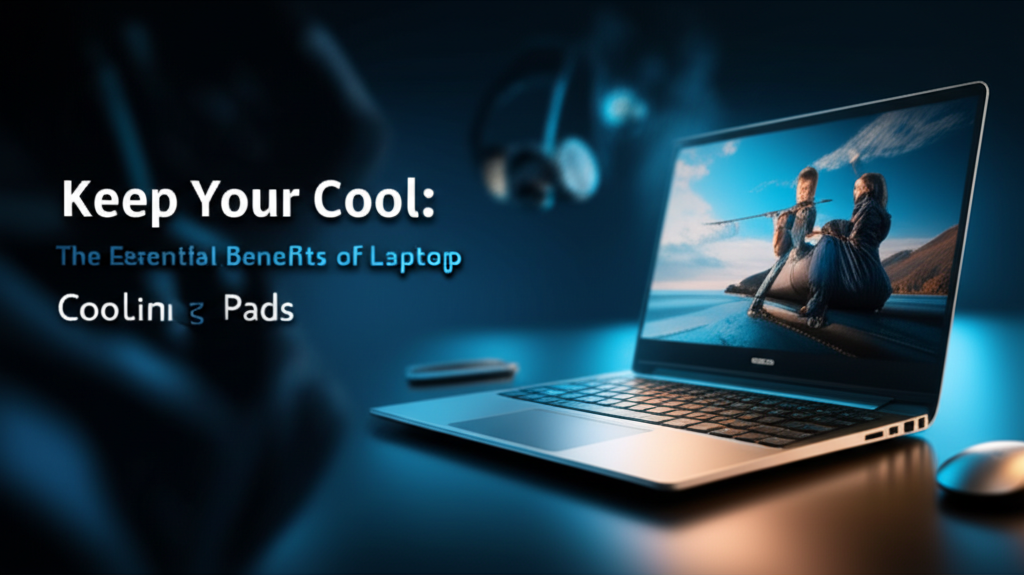Introduction
In today’s fast-paced, tech-driven world, laptops have become ubiquitous among students, professionals, and gamers alike. As they offer portability and convenience, they’re also known to heat up during prolonged use. This has sparked a rising trend in the gadget and devices niche—laptop cooling pads. Whether you’re crunching numbers, streaming movies, or battling in a virtual arena, keeping your laptop cool is essential for performance and longevity.
Laptop cooling pads are designed to keep your device at optimal temperatures, ensuring efficiency and preventing thermal throttling. In this article, we’ll explore the myriad benefits of these gadgets, key features to consider before purchasing, a comparison of popular products, use-case scenarios for different demographics, expert recommendations, FAQs, and a handy buyer’s checklist.
Key Features to Look For
When shopping for a laptop cooling pad, it’s crucial to know what to look for. Here are the primary features that can significantly impact your experience.
1. Cooling Efficiency
The main function of a cooling pad is to reduce your laptop’s temperature. Look for pads with high RPM fans. A typical range is between 1200 to 2500 RPM. Higher RPM generally means better cooling but may also lead to increased noise. Consider your noise tolerance when making a choice.
2. Fan Size & Number
Cooling pads typically feature multiple fans—usually between one to five. Larger fans tend to be quieter and more efficient, while smaller fans often run at higher speeds. Evaluate how many fans you need based on your laptop’s size and cooling requirements.
3. Ergonomics & Design
An adjustable design height is a substantial benefit. It can help maintain a comfortable typing angle, reducing strain on wrists and improving posture. Look for pads that allow various angles for optimum user comfort. Also consider the material; a lightweight design is ideal for portability.
4. Portability
Not all laptop cooling pads are suitable for on-the-go use. If you frequently travel, opt for a slender and lightweight model that can easily fit into your laptop bag. Furthermore, a USB-powered cooling pad can conveniently draw power from your laptop without needing an additional outlet.
5. Compatibility
Ensure that the cooling pad is compatible with your laptop’s size. Most pads are designed for a range of sizes, but not all support the entire range (usually between 11 to 17 inches).
6. Noise Level
Nobody wants a noisy fan distracting them from their work or gameplay. Check the product specifications for noise levels measured in decibels (dB). A good range to aim for is around 20-30 dB, which is quieter than a whisper.
7. Additional Features
Consider which extra features would enhance your experience. Some cooling pads come with:
- USB ports: Allowing additional connectivity
- LED lights: For aesthetic pleasure
- Built-in speakers: For an all-in-one gadget
- Dust filters: To keep small particles from entering your laptop
Comparison of Top Products in the Market
Choosing the right cooling pad can significantly affect your comfort and the performance of your laptop. Below is a comparison of some of the top products currently available.
1. Kootek Laptop Cooler Pad
Pros:
- Five adjustable fans allowing for targeted cooling
- Highly adjustable height for ergonomic comfort
- USB-powered with two additional ports
Cons:
- Fan noise can be noticeable at full speed
- Larger size may hinder portability
2. Thermaltake Massive 20 RGB
Pros:
- Large 200mm fan provides excellent cooling
- Gorgeous RGB lighting that adds aesthetic appeal
- Adjustable height and design
Cons:
- Bulky design may not be ideal for travel
- More expensive than basic models
3. Targus Lap Chill Mat
Pros:
- Lightweight and very portable
- Dual-fan design keeps laptop cool
- Passive cooling design (no noise)
Cons:
- Less effective than active options on high-performance laptops
- Limited airflow on the sides
4. Havit HV-F2056
Pros:
- Ultra-thin and lightweight
- Three fans for effective cooling
- Budget-friendly price
Cons:
- Fans may not be powerful enough for high-end gaming laptops
- Build quality could be better
5. Cooler Master Notepal X3
Pros:
- 200mm fan that offers very low noise levels
- Ergonomic design for typing comfort
- Adjustable fan speed control
Cons:
- May not accommodate larger laptops well
- Pricier than other basic cooling pads
Use-case Scenarios
Students
For students, a laptop cooling pad provides an essential performance boost during late-night study sessions or long lectures. The Kootek Laptop Cooler Pad with adjustable fans helps keep the laptop cool while also providing ergonomic benefits, preventing wrist strain.
Professionals
If you work from home or have a mobile office, consider the Havit HV-F2056. It offers effective cooling at a budget-friendly price point and is easy to carry between meetings. The passive cooling will keep the noise levels down while you focus on work.
Gamers
Gamers need high performance, and overheating can result in lag and slowdown. The Thermaltake Massive 20 RGB with its powerful 200mm fan and striking RGB lighting will not only cool down your laptop efficiently, but also add an aesthetically pleasing element to your gaming setup.
Expert Recommendations: Budget vs Premium Choices
Budget Options
- Havit HV-F2056: Ideal for casual users looking for an efficient yet inexpensive solution.
- Targus Lap Chill Mat: Provides great passive cooling that is suitable for students or workers who use laptops primarily for browsing and document editing.
Premium Options
- Thermaltake Massive 20 RGB: Perfect for gamers or professionals requiring high performance, this model offers superior cooling and aesthetics, albeit at a higher price.
- Cooler Master Notepal X3: A great ergonomic choice for prolonged use, making it suitable for both gamers and professionals alike.
FAQs
1. Do laptop cooling pads really work?
Yes, laptop cooling pads can significantly lower your laptop’s temperature by improving airflow around the device, especially during intense tasks like gaming or video editing.
2. Are all cooling pads the same size?
No, cooling pads come in different sizes and are designed to accommodate various laptop sizes. Make sure to select one suitable for your laptop.
3. How do I clean a laptop cooling pad?
Always power off and unplug the cooling pad before cleaning. Use compressed air to blow out dust and debris, and gently wipe the surface with a microfiber cloth.
4. Can cooling pads cause noise?
Yes, active cooling pads with fans may produce noise, especially at higher RPMs. Look for products that specify low noise levels if this is a concern for you.
5. Is a cooling pad necessary?
While not strictly necessary, a cooling pad can extend your laptop’s lifespan and improve performance, particularly if you regularly use resource-intensive software.
Buyer’s Checklist
- [ ] Determine the size compatibility with your laptop.
- [ ] Decide between active vs passive cooling based on usage.
- [ ] Check for fan noise levels if you’re sensitive to sound.
- [ ] Consider ergonomics and adjustability features.
- [ ] Look for additional USB ports if needed.
- [ ] Set a budget and consider both budget and premium options.
- [ ] Read user reviews for real-world performance insights.
Conclusion
In a world where laptops are central to both work and play, investing in a laptop cooling pad can help prolong the life of your device and enhance your overall user experience. By considering the above features, product comparisons, and use-case scenarios, you can find the perfect cooling pad tailored to your lifestyle. Keep your cool and let your laptop perform at its best!

